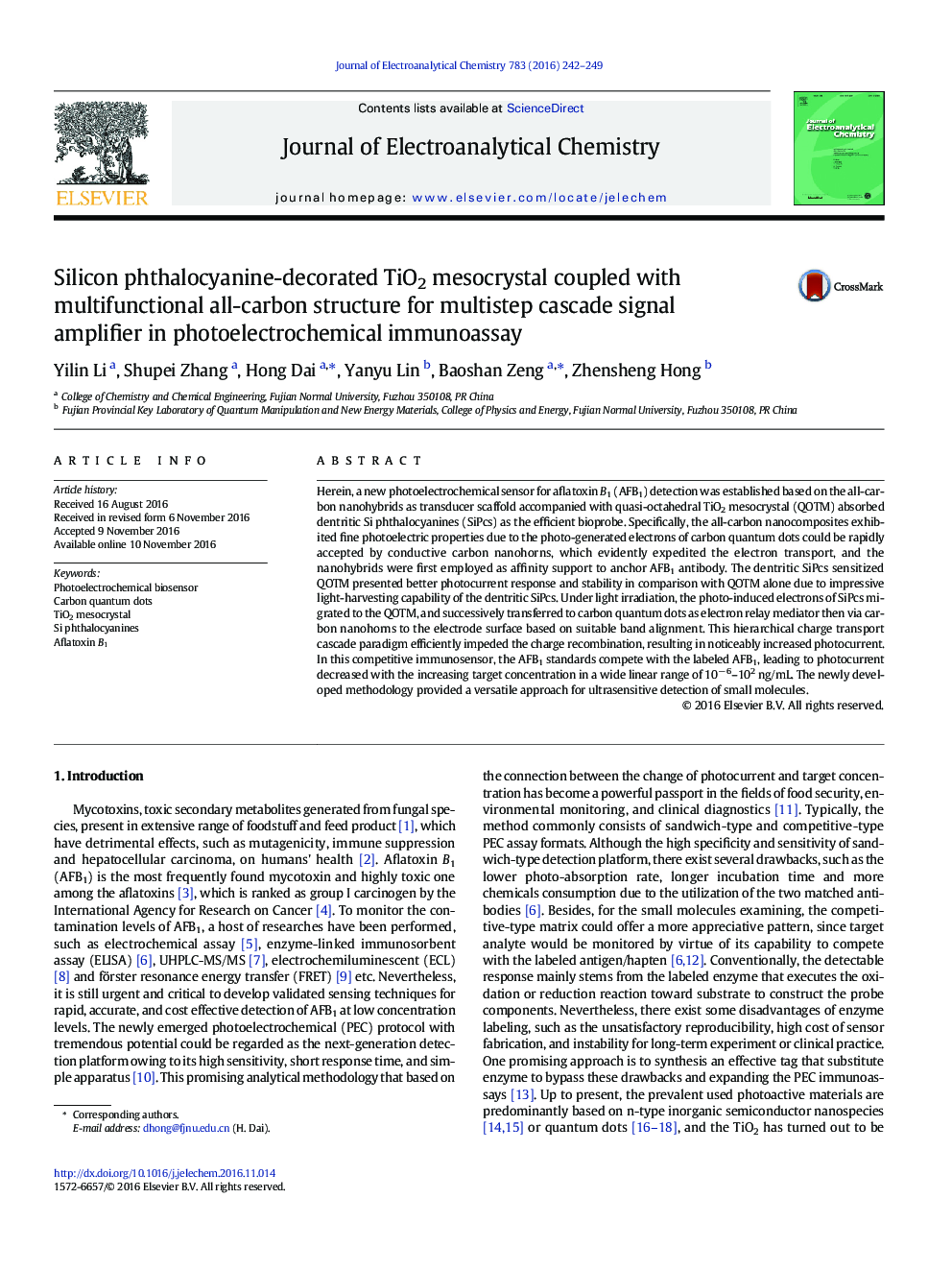| کد مقاله | کد نشریه | سال انتشار | مقاله انگلیسی | نسخه تمام متن |
|---|---|---|---|---|
| 6477097 | 1426592 | 2016 | 8 صفحه PDF | دانلود رایگان |

Highlight
• Multifunctional all-carbon nanohybrids were applied as the photoelectrochemical matrix for providing the basal photocurrent response.
Herein, a new photoelectrochemical sensor for aflatoxin B1 (AFB1) detection was established based on the all-carbon nanohybrids as transducer scaffold accompanied with quasi-octahedral TiO2 mesocrystal (QOTM) absorbed dentritic Si phthalocyanines (SiPcs) as the efficient bioprobe. Specifically, the all-carbon nanocomposites exhibited fine photoelectric properties due to the photo-generated electrons of carbon quantum dots could be rapidly accepted by conductive carbon nanohorns, which evidently expedited the electron transport, and the nanohybrids were first employed as affinity support to anchor AFB1 antibody. The dentritic SiPcs sensitized QOTM presented better photocurrent response and stability in comparison with QOTM alone due to impressive light-harvesting capability of the dentritic SiPcs. Under light irradiation, the photo-induced electrons of SiPcs migrated to the QOTM, and successively transferred to carbon quantum dots as electron relay mediator then via carbon nanohorns to the electrode surface based on suitable band alignment. This hierarchical charge transport cascade paradigm efficiently impeded the charge recombination, resulting in noticeably increased photocurrent. In this competitive immunosensor, the AFB1 standards compete with the labeled AFB1, leading to photocurrent decreased with the increasing target concentration in a wide linear range of 10− 6–102 ng/mL. The newly developed methodology provided a versatile approach for ultrasensitive detection of small molecules.
Journal: Journal of Electroanalytical Chemistry - Volume 783, 15 December 2016, Pages 242–249